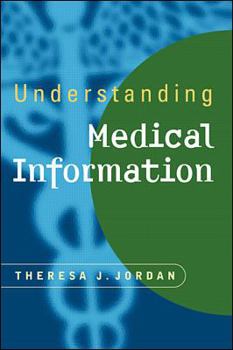Understanding Medical Information: A User's Guide to Informatics and Decision-Making
Shows you how to access the vast and rapidly expanding array of medical information available and how to critically evaluate it. This work explains the major types of medical research. It describes... This description may be from another edition of this product.
Format:Paperback
Language:English
ISBN:0838592724
ISBN13:9780838592724
Release Date:September 2001
Publisher:McGraw-Hill Medical Publishing
Length:304 Pages
Weight:1.20 lbs.
Dimensions:0.8" x 6.1" x 9.4"
Customer Reviews
1 rating
Helpful Gem
Published by Thriftbooks.com User , 21 years ago
This is a gem of a book . It will be most helpful to those people who want to be an active participant in the healthcare decisions being made for them or for someone who they are close to and who needs an advocate. It does this by explaining, in layman's terms, how medical professionals arrive at conclusions about diagnoses and treatment. The book can be unsettling because it shows how much uncertainty is associated with medicine. But it will help anyone begin to understand the medical treatment they or a loved one might be undergoing. It does this not by being a medical textbook about diseases, though it contains many medical examples; instead it is a guide that helps the reader to ask questions and search for further information about what doctors say.I was recently diagnosed with a medical problem. The book has helped me to think more actively about my treatment and to help me ask my doctor questions that I might not have thought about. Doctors are of ten not the all-knowing professionals you want them to be. In fact they should read this book as well.The best way I can describe the contents of the book is to quote from the Preface, "This book sets the stage for understanding medical information in Chapters 1 and 2 .... Chapter 3 provides an overview of the types of medical research [and] the role of statistics in evaluating studies .... Chapters 4, 5, and 6 comprise a central core of knowledge about the high - as well as lower-tech processes by which we make diagnoses of individual patients, assess the health of populations, make decisions about treatments under conditions of uncertainty, and attempt to provide the best prognostic judgments possible given the great complexity and diversity among patients. The final sections of the book, Chapters 7 and 8, provide conceptual as well as practical guidelines for assessing the quality of medical information available on the Internet, explain the ways in which Internet resources might best be used to capture good information, and confront the current realities of what can and cannot be expected from "artificial intelligence."Don't be put off by the statistical tables and terminology. They are explained remarkably well. You will learn how necessary statistics are to medicine without having to be a math whiz. I was amazed how the book made it easy to understand complex ideas in science, medicine and statistics. Reading this book is also a small intellectual adventure about how the science of medicine has evolved. The chapter on the Internet helps to grapple with the mass of information that can swamp you.Each chapter is followed by a summary with suggested references. What I particularly liked was the short blurbs accompanying the references, making it easier to decide what might be worth further investigation.




